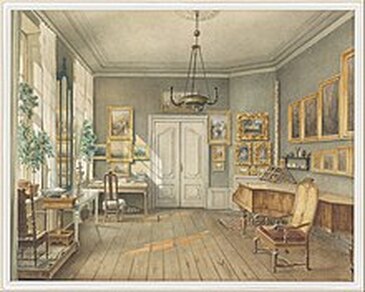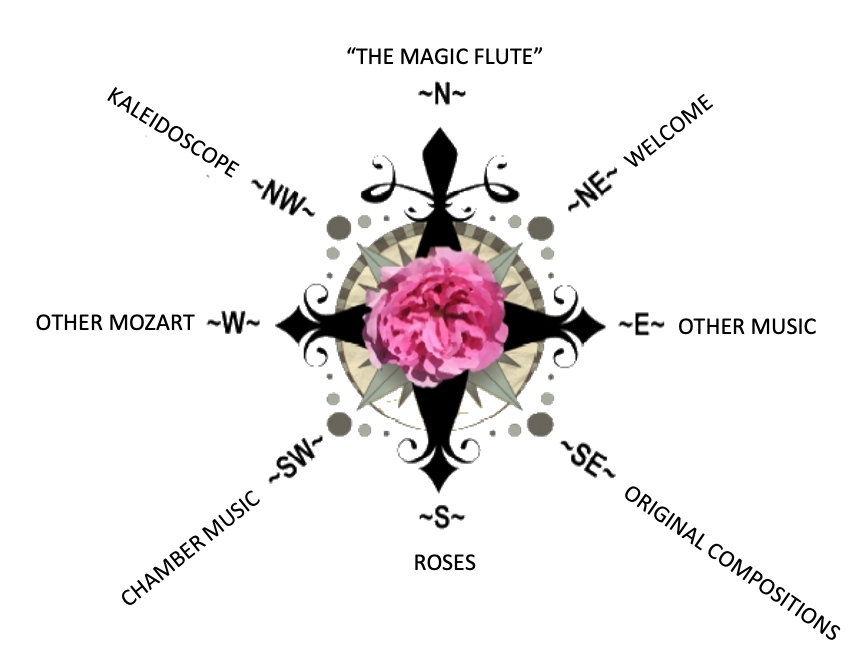- Home
- N - The Magic Flute
- NE - Welcome!
-
E - Other Music
- E - Music Genres >
- E - Composers >
-
E - Extended Discussions
>
- Allegri: Miserere
- Bach: Cantata 4
- Bach: Cantata 8
- Bach: Chaconne in D minor
- Bach: Concerto for Violin and Oboe
- Bach: Motet 6
- Bach: Passion According to St. John
- Bach: Prelude and Fugue in B-minor
- Bartok: String Quartets
- Brahms: A German Requiem
- David: The Desert
- Durufle: Requiem
- Faure: Cantique de Jean Racine
- Faure: Requiem
- Handel: Christmas Portion of Messiah
- Haydn: Farewell Symphony
- Liszt: Évocation à la Chapelle Sistine"
- Poulenc: Gloria
- Poulenc: Quatre Motets
- Villa-Lobos: Bachianas Brazilieras
- Weill
-
E - Grace Woods
>
- Grace Woods: 4-29-24
- Grace Woods: 2-19-24
- Grace Woods: 1-29-24
- Grace Woods: 1-8-24
- Grace Woods: 12-3-23
- Grace Woods: 11-20-23
- Grace Woods: 10-30-23
- Grace Woods: 10-9-23
- Grace Woods: 9-11-23
- Grace Woods: 8-28-23
- Grace Woods: 7-31-23
- Grace Woods: 6-5-23
- Grace Woods: 5-8-23
- Grace Woods: 4-17-23
- Grace Woods: 3-27-23
- Grace Woods: 1-16-23
- Grace Woods: 12-12-22
- Grace Woods: 11-21-2022
- Grace Woods: 10-31-2022
- Grace Woods: 10-2022
- Grace Woods: 8-29-22
- Grace Woods: 8-8-22
- Grace Woods: 9-6 & 9-9-21
- Grace Woods: 5-2022
- Grace Woods: 12-21
- Grace Woods: 6-2021
- Grace Woods: 5-2021
- E - Trinity Cathedral >
- SE - Original Compositions
- S - Roses
-
SW - Chamber Music
- 12/93 The Shostakovich Trio
- 10/93 London Baroque
- 3/93 Australian Chamber Orchestra
- 2/93 Arcadian Academy
- 1/93 Ilya Itin
- 10/92 The Cleveland Octet
- 4/92 Shura Cherkassky
- 3/92 The Castle Trio
- 2/92 Paris Winds
- 11/91 Trio Fontenay
- 2/91 Baird & DeSilva
- 4/90 The American Chamber Players
- 2/90 I Solisti Italiana
- 1/90 The Berlin Octet
- 3/89 Schotten-Collier Duo
- 1/89 The Colorado Quartet
- 10/88 Talich String Quartet
- 9/88 Oberlin Baroque Ensemble
- 5/88 The Images Trio
- 4/88 Gustav Leonhardt
- 2/88 Benedetto Lupo
- 9/87 The Mozartean Players
- 11/86 Philomel
- 4/86 The Berlin Piano Trio
- 2/86 Ivan Moravec
- 4/85 Zuzana Ruzickova
-
W - Other Mozart
- Mozart: 1777-1785
- Mozart: 235th Commemoration
- Mozart: Ave Verum Corpus
- Mozart: Church Sonatas
- Mozart: Clarinet Concerto
- Mozart: Don Giovanni
- Mozart: Exsultate, jubilate
- Mozart: Magnificat from Vesperae de Dominica
- Mozart: Mass in C, K.317 "Coronation"
- Mozart: Masonic Funeral Music,
- Mozart: Requiem
- Mozart: Requiem and Freemasonry
- Mozart: Sampling of Solo and Chamber Works from Youth to Full Maturity
- Mozart: Sinfonia Concertante in E-flat
- Mozart: String Quartet No. 19 in C major
- Mozart: Two Works of Mozart: Mass in C and Sinfonia Concertante
- NW - Kaleidoscope
- Contact
FANNY MENDELSSOHN-HENSEL AND AMY CHENEY BEACH
by Judith Eckelmeyer
(GRACE WOODS MUSIC SESSION JUNE 5, 2023)
It is my hope that this session will help illuminate the extraordinary talent of two women who in their lifetimes worked through the limitations that a male-oriented society imposed on them to create beautiful, structurally refined, unique musical works requiring virtuosic skill to perform. At the same time, I think it will also make clear the huge chasm that until recent decades left both the public and scholars ignorant of the contributions of both of this session’s focal composers, as well as of so many other talented, well-trained, creative women who composed music.
A case in point: for anyone searching the New Grove Dictionary of Music and Musicians, published in 1980, the entries for Fanny Mendelssohn and Amy Beach each consist of two paragraphs of biography, and in the case of Fanny, no separated, detailed list of compositions; within Amy’s works we find opus numbers running over 150! To be fair, many of these are smaller works for home amateur enjoyment, like those of Edward MacDowell or Edvard Grieg of about the same period; but opera, symphony, and concerto genres as well as chamber music are represented. And alas, in an even earlier edition of Grove (1902, which had belonged to my grandfather), neither Amy nor Fanny is included. Today, though, Wikipedia posts and other entries on-line provide much detail, and biographies of both women are available. Recordings of much of their music are also available, some in multiples.
So—who are these two women?
Fanny Mendelssohn, Felix’s older sister, was born in Hamburg in 1805 and died tragically early in 1847. As did Felix, Fanny grew up in Berlin, to which the family had moved to escape the reach of Napoleon’s regime.
Her education at home included music lessons from her mother, then in piano from concert pianist and teacher Ludwig Berger, and in composition from none other than Carl Friedrich Zelter, composer and teacher whose love of J. S. Bach’s music filtered to Felix, influencing Felix’s decision to edit and produce a performance of The St. Matthew Passion. Fanny’s musical ability was evident very early: she is reported to have played Bach’s Well-Tempered Clavier—from memory—at age 13.
Fanny composed throughout her life (over 450 works), although she seemed most confident in small forms such as Lieder. These were not toss-off pieces; they occupied a place in Felix’s Opus 8 and Opus 9 songs, published under his name. (Interestingly, when Felix performed his songs for Queen Victoria, she preferred Fanny’s to his, without knowing the composer was Felix’s sister.) Among her larger works are an oratorio, a cantata, a cycle of piano works called The Year, a string quartet, a piano quartet, and a piano trio, among others.
When it came time to prepare to marry, her family, including Felix, were very insistent that she leave off composing. Her husband, painter Wilhelm Hensel, supported her desire to compose and perform, but after her marriage in 1829 most of her pieces were small forms.
Fanny never promoted her own talents to the public, either as a composer or a virtuoso pianist, but some influential musicians such as Clara Schumann thought highly of her music. Some of her accomplishments were discovered in her diary and in her son Sebastian’s family biography. Many of her compositions were never published but retained in several collections, in Berlin, Oxford, New York Public Library, and the Library of Congress. She composed her 4-movement Piano Trio in D minor, op. 11, in 1847.
Fanny Mendelssohn Piano Trio in D minor, op. 11 I Allegro molto vivace
Aletheia Piano Trio
Aletheia Piano Trio
Fanny Mendelssohn Piano Trio in D minor, op. 11 I Movements II & III
Aletheia Piano Trio
Aletheia Piano Trio
Fanny Mendelssohn Piano Trio in D minor, op. 11 I Finale
Aletheia Piano Trio
Aletheia Piano Trio
Amy Marcy Cheney Beach, born in West Henniker, New Hampshire, in 1867, was truly a child genius. From the age of 1 she showed advanced musical gifts, including retaining 40 songs to sing and two years later composing three waltzes, without a piano available, and playing music by ear. When Amy was 6, her musically trained mother began formal piano lessons, but Amy was an autodidact, very curious and eager to learn everything that would help her to compose. When the family moved close to Boston she received some formal instruction in harmony and counterpoint, but soon struck out on her own, seeking books on harmony, counterpoint and fugue, which she taught herself. She acquired two French treatises on orchestration, translated them into English and taught herself orchestration. By age 16 she had appeared in public to perform piano works by Chopin and Moscheles, winning great approval from the press and the audience.
Amy married Henry Harris Aubrey Beach, a surgeon 24 years her senior, when she was 18. Until his death in 1910 she supported his social status and by agreement with him limited public performances to two a year and would not teach piano. In these years she identified herself as Mrs. H. H. A. Beach. After his death, she traveled and performed in Europe, where she identified herself as Amy Beach, but back in the U. S. she resumed using his initials.
Amy’s compositions included the first symphony by an American woman--the “Gaelic” Symphony, 1896--the piano concerto in C-sharp minor, Op, 45, 1899, Mass in E-flat, 1892, and St. Francis’s Canticle of the Sun, 1924/28, both for voices and orchestra, as well as numerous songs, piano works, chamber music, and an opera, Cabildo, Op. 149, 1932.
Amy Beach: Symphone in E-minor, Op. 32 "Gaelic"
Mov.I: Allegro con fuoco 00:00 Mov.II: Alla siciliana - Allegro vivace 11:06 Mov.III: Lento con molto espressione 18:51 Mov.IV: Allegro di molto 31:33
Orchestra: Detroit Symphony Orchestra | Conductor: Neeme Järvi
Mov.I: Allegro con fuoco 00:00 Mov.II: Alla siciliana - Allegro vivace 11:06 Mov.III: Lento con molto espressione 18:51 Mov.IV: Allegro di molto 31:33
Orchestra: Detroit Symphony Orchestra | Conductor: Neeme Järvi
Amy Beach: Piano Concerto in C-sharp minor, Op. 45
Alan Feinberg, piano | Nashville Symphony Orchestra | Kenneth Schermerhorn, conductor
Alan Feinberg, piano | Nashville Symphony Orchestra | Kenneth Schermerhorn, conductor
Amy Beach: Mass in E flat major
Stow Festival Chorus and Orchestra | Barbara Jones, director
Kyrie [00:00] Gloria [05:42] Laudamus te [12:39] Qui tollis [18:57] Quoniam tu solus [24:36] Credo [28:16] (Et incarnatus est) [32:26] (Et resurrexit) [36:59] Sanctus [42:06] Benedictus [46:25] Agnus Dei [51:13]
Stow Festival Chorus and Orchestra | Barbara Jones, director
Kyrie [00:00] Gloria [05:42] Laudamus te [12:39] Qui tollis [18:57] Quoniam tu solus [24:36] Credo [28:16] (Et incarnatus est) [32:26] (Et resurrexit) [36:59] Sanctus [42:06] Benedictus [46:25] Agnus Dei [51:13]
Amy Beach: Canticle of the Sun
Capitol Hill Choral Society | Amy Beach | Betty Buchanan | Paul Hardy
Capitol Hill Choral Society | Amy Beach | Betty Buchanan | Paul Hardy
Amy Beach: Cabildo, Op. 149
Ah, Love is a jasmine vine with tendrils delicate and strong
Artist: Lauren Flanigan Artist: Carter Brey Artist: Mark Peskanov Artist: Charlotte Hellekant Artist: Paul Groves Artist: Christopher O'Riley Artist: Anthony Dean Griffey Artist: Eugene Perry Artist: Stephen Mo Hanan Artist: Thomas Paul
Choir: New York Concert Singers | Conductor: Ransom Wilson
Ah, Love is a jasmine vine with tendrils delicate and strong
Artist: Lauren Flanigan Artist: Carter Brey Artist: Mark Peskanov Artist: Charlotte Hellekant Artist: Paul Groves Artist: Christopher O'Riley Artist: Anthony Dean Griffey Artist: Eugene Perry Artist: Stephen Mo Hanan Artist: Thomas Paul
Choir: New York Concert Singers | Conductor: Ransom Wilson
Late in her career she became active in music education at local and national levels; she mentored young composers and wrote articles guiding students in developing their skills. As a member of P.E.O., she sought to assist women wishing to further their education. Her music was so respected by five contemporary composers, George Chadwick, Horatio Parker, Arthur Foote, John Knowles Paine, and Edward MacDowell—“The Second New England School”—that they added Amy to their group, forming the “Boston Six”.
Judith Eckelmeyer © 2023
Choose Your Direction
The Magic Flute, II,28.














